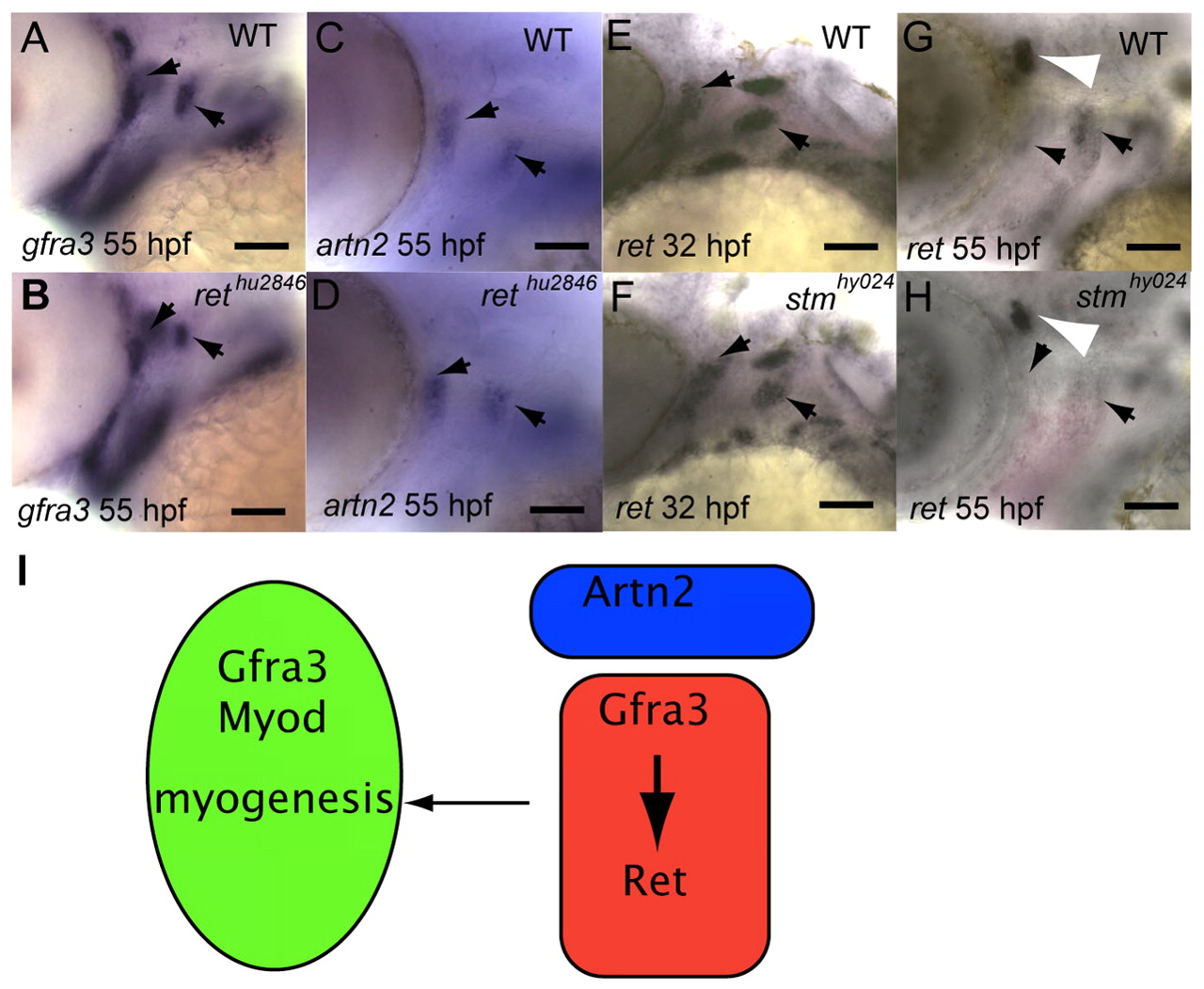Fig. 7 Gfra3 function is required for maintaining ret expression in opercular associated cells. (A-H) Expression of gfra3 (A,B), artn2 (C,D) and ret (E-H) in rethu2846 mutants (B,D) and wild-type (WT) siblings (A,C), stmhy024 mutants (F,H) and WT siblings (E,G) at 32 hours post-fertilisation (hpf; E,F) or 55 hpf (A-D,G,H). At 55 hpf, there are fewer gfra3-expressing cells in the forming adductor operculi (ao) and levator operculi (lo) (arrowheads) of rethu2846 mutants (B) compared with WT (A). By contrast, artn2 expression in the dorsal pharyngeal arches is unaffected in rethu2846 mutants (D) compared with WT (C). At 32 hpf, there are fewer ret+ cells (black arrowheads) in the dorsal second arch of stmhy024 mutants (F) relative to WT (E). Later, at 55 hpf ret expression in the opercular muscles is lost, but is unaffected in the anterior lateral line ganglia (white arrowhead, H). (I) A model for Ret signalling during opercular muscle development. Ret receptor and the Gfra3 co-receptor are present on myoblast cells (red). Artn2 from adjacent mesenchymal cells (blue) binds the Gfra3 co-receptor in Ret+ cells and muscle cells. Activation of Ret signalling by Gfra3 and Artn2 is required to maintain ret expression in myoblast cells and for myogenic differentiation to occur, involving myod expression and a loss of ret expression. Scale bars: 100 μm.
Image
Figure Caption
Figure Data
Acknowledgments
This image is the copyrighted work of the attributed author or publisher, and
ZFIN has permission only to display this image to its users.
Additional permissions should be obtained from the applicable author or publisher of the image.
Full text @ Development

